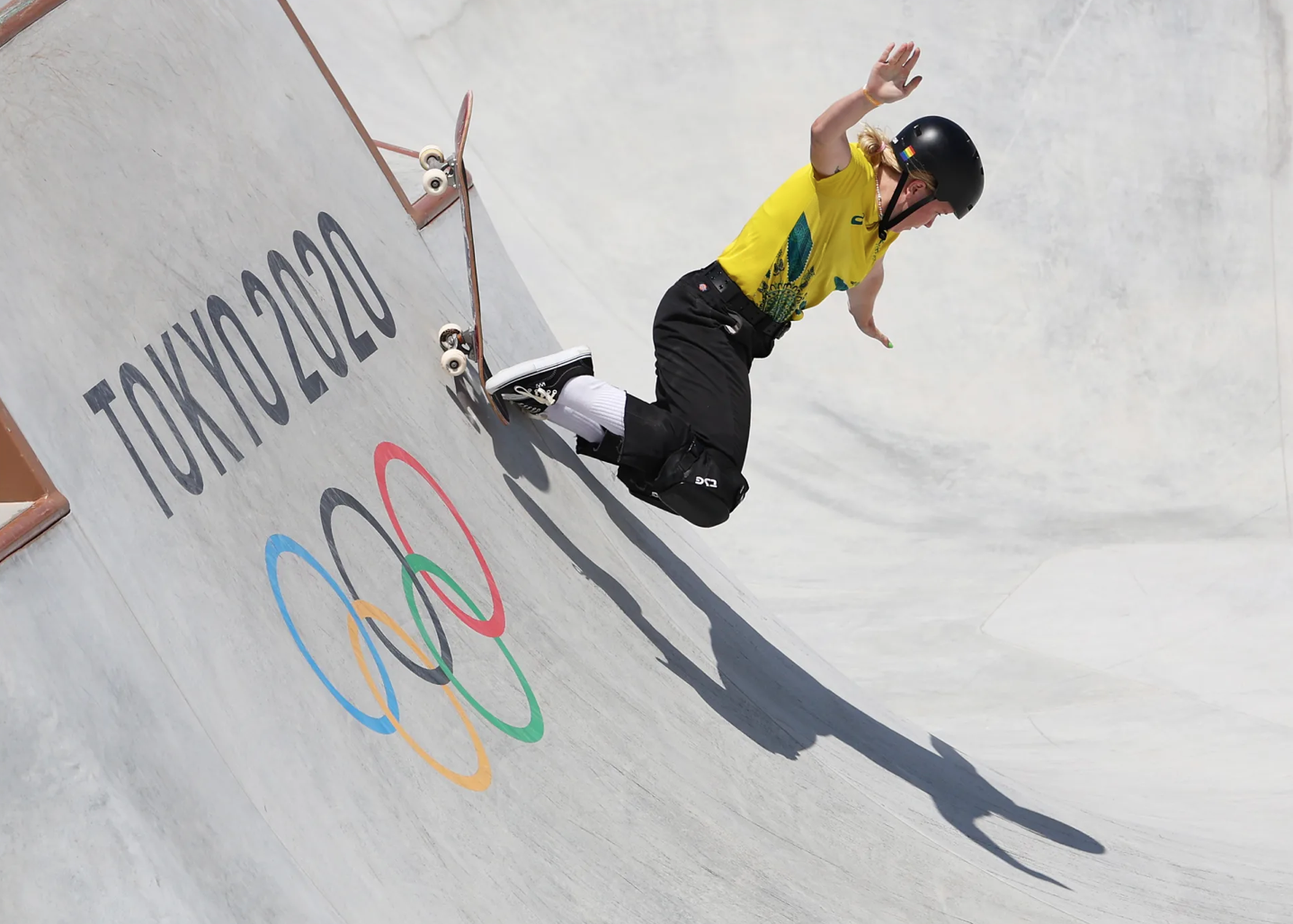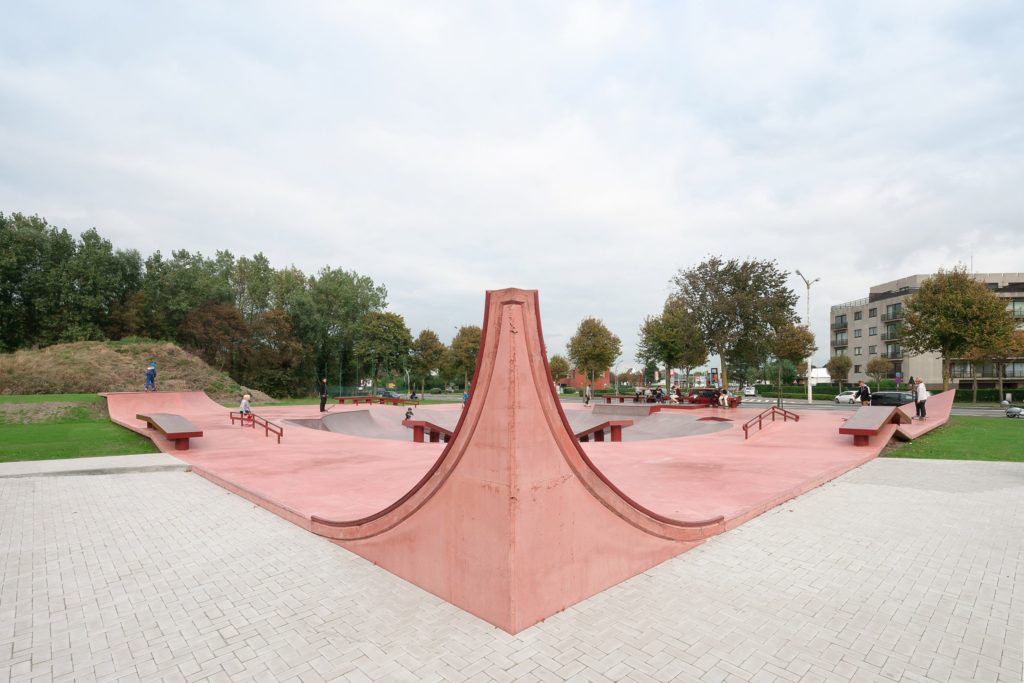Skateboarding made its historic debut at this summer’s Olympic Games – a milestone for the sport, which started as an offshoot of California’s surfing scene in the late 1940s.
While the first boards had roller skate wheels and rudimentary wooden planks, skateboarding has evolved into a sophisticated sport with global appeal and birthing an entire subculture, encompassing music, fashion, art and architecture, in the process.

It’s unlikely that purpose-built skateparks will ever completely replace the appeal of greased up curbs or empty swimming pools. Still, these designated facilities offer challenges of their own: complex fixtures, ramps and towering half-pipes conceived to challenge a new generation of skaters.
Many of the world’s best skateparks are located in the USA, crafted by the likes of California Skateparks, Spohn Ranch, Gridline and Dreamland. But some of the most design-forward are dotted around the globe, and they’re reimagining the sport’s relationship with design.

Ariake Urban Sports Park, Japan
Japan won two gold medals in the debut Street event though skateboarding is banned in most of the country’s parks and public spaces, meaning the country’s top athletes, including Momiji Nishiya, usually train in the USA.
The Ariake Urban Sports Park is the first-of-its-kind outdoor facility in Tokyo’s Kōtō district. Spanning a whopping 97,000 sq m, the facility is designed with gender and stance equality in mind.
Its hollowed-out park course of dome-shaped bowls is set for height and tricks, while the straight, street-like course features stairs, handrails, curbs, benches, walls and slopes – all rendered in a muted, pastel colour palette.
While history was witnessed at the $32m facilities, that doesn’t mean its future is certain. A battle is expected for the land on which the park is built, with at least 10 developers in the hunt, according to The FT. But the medals might well signify a turning point in the Japanese public’s appreciation of the sport – safeguarding the park’s future in the process. It remains to be seen.
Photography: Olympics

Colorama, France
Colour abounds at this Yinka Ilori-designed park in Lille, which is set inside a warehouse that’s been completely transformed through design. Brickwork and concrete columns have been daubed in bright paint and pattern in the hope of inviting experienced skaters as well as newbies to the sport.
Photography: Julien Pitinome

Colorama, France
Colour abounds at this Yinka Ilori-designed park in Lille, which is set inside a warehouse that’s been completely transformed through design. Brickwork and concrete columns have been daubed in bright paint and pattern in the hope of inviting experienced skaters as well as newbies to the sport.
Photography: Julien Pitinome

Blankenberge park, Belgium
This bowl-shaped skatepark in the Belgian city of Blankenberge was designed by Brussels studio B-ILD, who used red concrete and installed crimson handrails and benches. Its sculptural shape makes for a sharp contrast with the greenery that surrounds it.
Photography: Dennis De Smet

Blankenberge park, Belgium
This bowl-shaped skatepark in the Belgian city of Blankenberge was designed by Brussels studio B-ILD, who used red concrete and installed crimson handrails and benches. Its sculptural shape makes for a sharp contrast with the greenery that surrounds it.
Photography: Dennis De Smet

Kaos Temple, Spain
A hundred-year-old church isn’t an obvious home for a skatepark, but Llanera’s Church of Santa Barbara is overthrowing convention and welcoming skaters in place of worship. Once abandoned, the space has now been painted in a kaleidoscopic palette, with a half-pipe installed where the pews were.
Photography: Elchino Pomares

Kaos Temple, Spain
A hundred-year-old church isn’t an obvious home for a skatepark, but Llanera’s Church of Santa Barbara is overthrowing convention and welcoming skaters in place of worship. Once abandoned, the space has now been painted in a kaleidoscopic palette, with a half-pipe installed where the pews were.
Photography: Elchino Pomares

La Duna, Mexico
Located in Mexico’s Chihuahuan Desert, the rose-pink La Duna skatepark was designed by a team of architects, designers and urban planners. It’s part of a wider public space that includes classrooms and a viewing platform, where visitors can admire the surrounding landscape or watch the skaters at work below.
Photography: Onnis Luque

La Duna, Mexico
Located in Mexico’s Chihuahuan Desert, the rose-pink La Duna skatepark was designed by a team of architects, designers and urban planners. It’s part of a wider public space that includes classrooms and a viewing platform, where visitors can admire the surrounding landscape or watch the skaters at work below.
Photography: Onnis Luque

Nike Templo Mayor Skatepark, Mexico
As its name suggests, Mexico City’s Nike Temple Mayor Skatepark is a collaboration between sports brand and the city’s government, and is designed by top specialist firm California Skateparks. Being the first ever certified Street League Plaza outside of the USA, it boasts vibrant colours and Aztec-inspired murals and hubby ledge designs by Mexican artist Luis Ponc, who also created a patterned piece at the entrance to the park.
Photography: Nike























